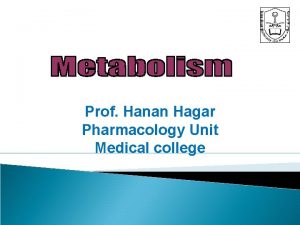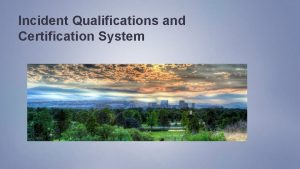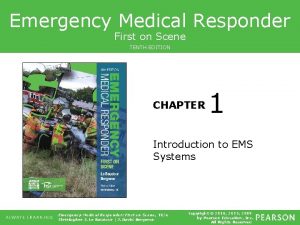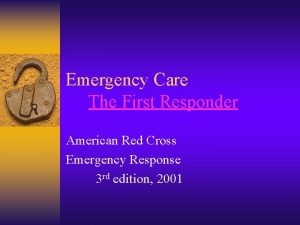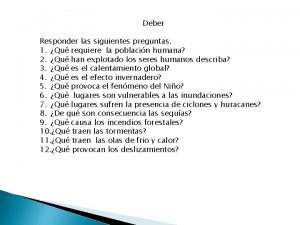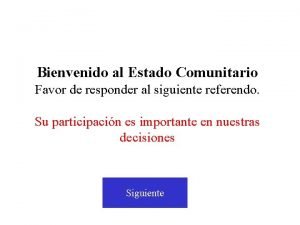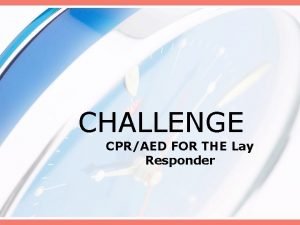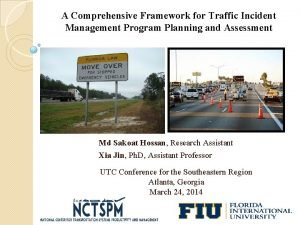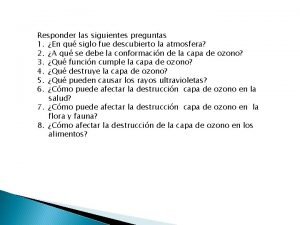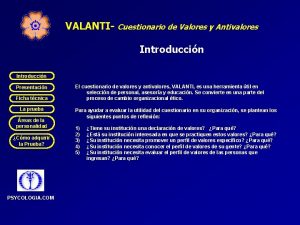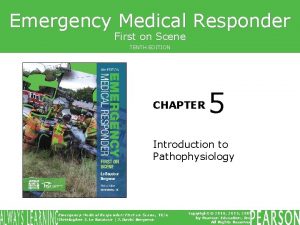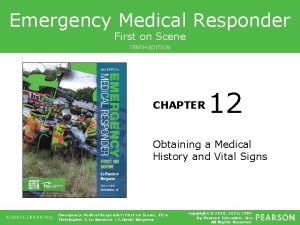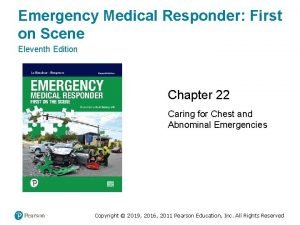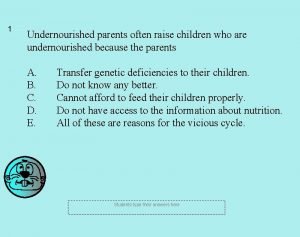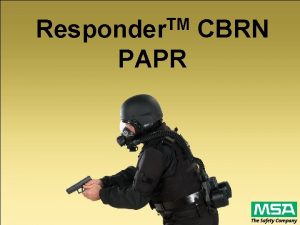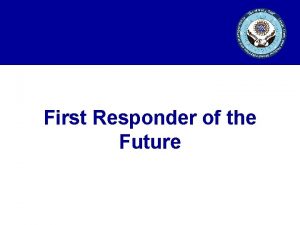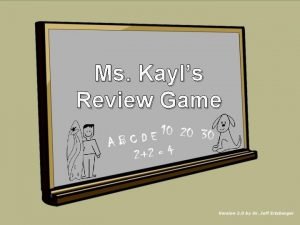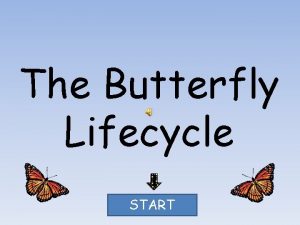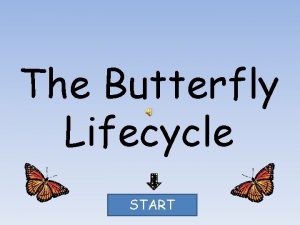Next lecture InductionSignaling Requirements of inducer and responder






























- Slides: 30

Next lecture: Induction/Signaling • Requirements of inducer and responder cells • Cascades of inductive events are involved in forming organs • Examples of the kinds of cell communication • Important signaling pathways in development – Notch, TGFb, SHH, Wnt, FGF

“Official glossary” from Wolpert • Induction: The process whereby one group of cells signals to another group of cells in the embryo and so affects their development • Competence: The ability of a tissue to respond to an inducing signal. Embryonic tissues remain competent for a limited time (Can depend on prior inductive events)

Competence factors • Not all tissues are able to respond to the same signals. Competence is actively acquired – Receptors, signaling molecule – Transcription factors (chromatin state) • Competence factors are specifically required in the responding tissue, not the inducer – Demonstrated in recombination experiments

Recombination experiments: First name the players…(fig 6. 1 from Gilbert)

Then play… Fig 6. 3 Gilbert

Cascades of inductive events form the organ: Reciprocal induction Of Gilbert

Two kinds of induction (plus one) • Instructive interaction: A signal or factor which tells the developing cell what it is • Permissive interaction: A signal or factor that allows the cell to become what it is • Selective interaction. A factor allows the cell to be “selected” into one lineage or another after a stochastic (random) change

For example, CD 4 vs. CD 8 T cells Selection vs. Instruction TCR-I CD 8 TCR-II CD 4

Juxtacrine interactions • Involve cell surface receptors on inducer and responding cells (no soluble factors) • Cell death/apoptosis pathways – Fas (CD 95)/Fas. L • Notch/delta pathway – Involved in many binary cell fate decisions – Examples in flies, worms and mice

Cell death pathways Figure 6. 27 of Gilbert

Notch is involved in a wide array of binary cell fate decisions • C. elegans: Ventral uterine vs. Anchor cell and vulval development • Drosophila: Neural vs. Epidermal cells • Mouse: Embryonic lethal, Demonstrated affects in the immune system and others • Human: Notch deficiencies cause birth defects

Notch/delta pathway(fig 6. 29 of Gilbert) This model is simplistic little evidence for nuclear localization of Notch in developing organisms

Players in the Notch pathway • Receptor family: Notch/lin-12, glp-1 • Ligands: (DSL) Delta, Serrate, Lag 2, Jagged • Processing: ADAMs (Kuz, TACE) and Secretases (Sel-12/presenilins) • Downstream effectors: CBF 1, Su(Hairless), Lag 1 (Collectively called CSL)

Proteolytic processing of Notch is complicated Figure 1 from Weinmaster (2000)Curr. Opin. Genet. Dev. 10: 363 -369

Presenilins • Multipass transmembrane proteins • Mutated in inherited, early onset Alzheimer's disease • Involved in cleavage of amyloid precursor protein (APP) • Evidence that they are proteases or cofactors of a protease

Evidence linking presenilins with Notch signaling • Homology between PS 1 and Sel-12 of C. elegans (sel-12 facilitates Notch signaling) • PS and Notch deficient animals have similar phenotypes (Drosophila and mice) • PS is required for access of Notch to the nucleus and, thus, Notch signaling • Defects can be rescued by providing exogenous PS

Current view of Notch signaling Figure 2 from Weinmaster (2000) Curr Opin Genet. Dev. 10: 363 -369

Notch involvement in cell fate • Examples of Notch involvement in inductive interactions (signaling between non-equivalent cells) • Lateral specification (occurs in a population of equivalent cells) – Involves the amplification of a stochastic small difference between equivalent cells

Lateral specification in C. elegans From Greenwald (1998) Genes. Dev. 12: 1751 -62

Evidence for feedback mechanism in lateral specification • Constitutive active mutants of lin 12 have no AC • Mutants eliminating lin 12 activity have 2 AC • Mixing experiments between two types above – Lin 12 - cells always became AC – Lin 12 WT cells always became VU • Behavior different from WT in non-mosaic situation where these cells have equal chance to become AC or VU

One way to generate a bias in Notch activity-C. elegans vulval development From Greenwald (1998) Genes. Dev. 12: 1751 -62 fate adoption is 2 o-1 o-2 o

Gilbert Chapter 6 errors • Lag 2 is not secreted but transmembrane. This is the ligand for lin 12/Notch (p. 169) • Figure 6. 40 on T-lymphocyte signaling: The pathways leading from the receptors are not correct. (Notice, there is no reference) • Figure 6. 19: Details appear to be in dispute

Paracrine factors and interactions • • • Transforming Growth Factor (TGF)-b Sonic Hedgehog Wnt Fibroblast Growth Factor (FGF) Retinoic Acid (RA)

TGF-b • Over 30 members of the TGF-b family • Subfamilies, TGFb, Activin, BMP, Vg 1 • Processed proteolytically with the C-terminal region conatining the mature peptide • TGFb peptides can homo- or hetero-dimerize • TGFb signal transduction involves multiple receptors which activate cytoplasmic “Smads”

Smad pathway (fig 6. 20) p. 159

Division of labor among Smads Courtesy of J. F. Doody (J. Massague lab @MSKCC) Smad 6 and 7 are inhibitory proteins induced by antagonists of the TGFb signaling pathway, such as g-interferon (Smad 7)

The Smad family From Piek, et. al. (1999) FASE�B J. 13: 2105 -2124

A more complete TGFb pathway From Piek, et. al. (1999) FASE�B J. 13: 2105 -2124

Evidence for non-redundant TGFb family involvement in development (due to expression patterns) • TGF-b 1 knockout mice have defects in blood and vasculature (many die prenatally) • TGF-b 2 knockout mice have multiple organ malformation (perinatal death) • TGF-b 3 knockout mice die shortly after birth due to defects in pulmonary development • Information from Piek, et. al. (1999) FASEB J.

Next lecture: Induction/Signaling • Requirements of inducer and responder cells • Cascades of inductive events are involved in forming organs • Examples of the kinds of cell communication • Important signaling pathways in development – Notch, TGFb, SHH, Wnt, FGF
 X.next = x.next.next
X.next = x.next.next Metabolism of drug definition
Metabolism of drug definition Glucouronide
Glucouronide Hme inducer
Hme inducer Enzyme inducer drugs
Enzyme inducer drugs 01:640:244 lecture notes - lecture 15: plat, idah, farad
01:640:244 lecture notes - lecture 15: plat, idah, farad Como responder un correo formal
Como responder un correo formal National tim responder training test answers
National tim responder training test answers Iqcs master record
Iqcs master record Emergency medical responder 10th edition
Emergency medical responder 10th edition Red cross first responder
Red cross first responder Responder
Responder Crisis responder
Crisis responder Esten siempre preparados para responder
Esten siempre preparados para responder Law enforcement first responder
Law enforcement first responder Que responder a bienvenido
Que responder a bienvenido National tim responder training test answers
National tim responder training test answers Responder
Responder What is a lay responder
What is a lay responder National tim responder training test answers
National tim responder training test answers En qu
En qu Cuales son las consecuencias de rechazar a dios
Cuales son las consecuencias de rechazar a dios Valanti prueba
Valanti prueba Emergency medical responder first on scene 10th edition
Emergency medical responder first on scene 10th edition Emergency medical responder 10th edition
Emergency medical responder 10th edition Emergency medical responder first on scene 11th edition
Emergency medical responder first on scene 11th edition Undernourished parents often raise
Undernourished parents often raise Magnetism
Magnetism Power system dynamics and stability lecture notes
Power system dynamics and stability lecture notes Microbial physiology lecture notes
Microbial physiology lecture notes Ternology
Ternology

